

Matt Campbell
2026 MG U9 review
4 Hours Ago
While not as potent as the manic Type R, the 'base' Civic VTi LX is a superbly engineered all-rounder – if you can get past its premium pricing.
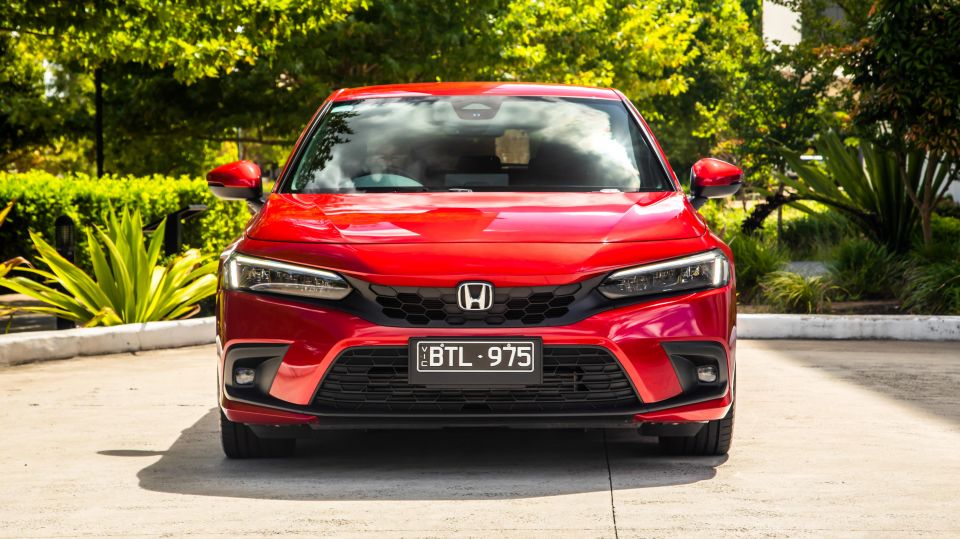
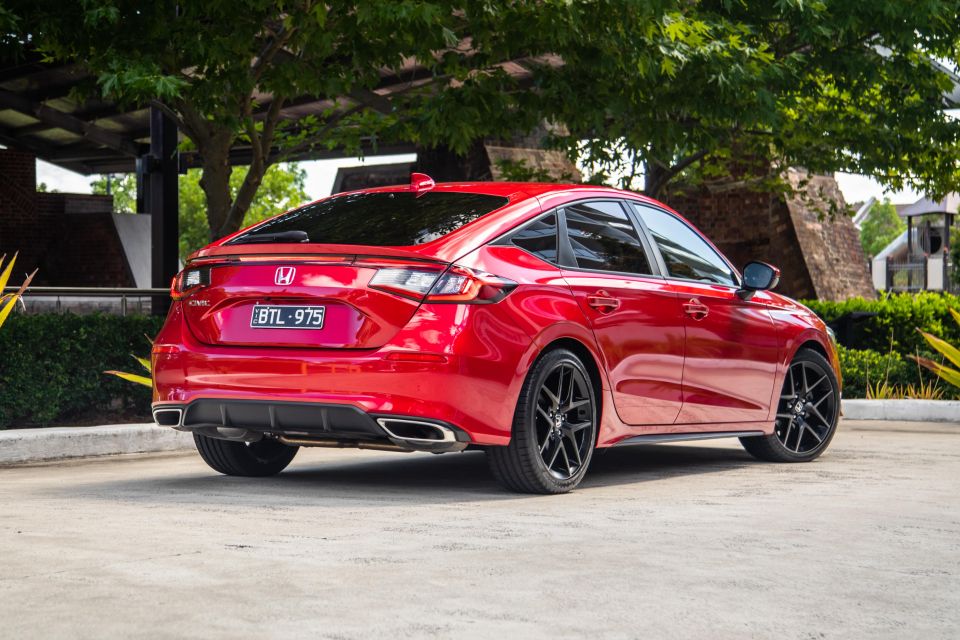

Quickly see how this car stacks up against its competition. Select any benchmark to see more details.
Where expert car reviews meet expert car buying – CarExpert gives you trusted advice, personalised service and real savings on your next new car.
It may not have the rear wing, spoilers or even the bonnet vent, but the regular Honda VTi LX still has the bones of the world-beating Type R hot hatch.

For those of you who haven’t yet read our review of the latest-generation Type R, it is by any measure a brilliant piece of engineering that borders on the obsessive. It simply must be driven to be believed.
My point is when car manufacturers like Honda go to such fanatic lengths to develop such a universally lauded performance car as the Type R, surely the overarching goal is for the car’s pedigree flow to across the entire model range – in this case the VTi LX tested here.
Unlike the Type R which is only in its sixth generation, the current Civic moves the lineage on to 11 generations and a product of more than 50 years in the making.
Like the latest Type R, the new Civic is longer, wider, lower and stiffer than its predecessor. It also gets a raft of other chassis improvements designed to make the car dynamically superior and more comfortable than almost anything else in the segment.
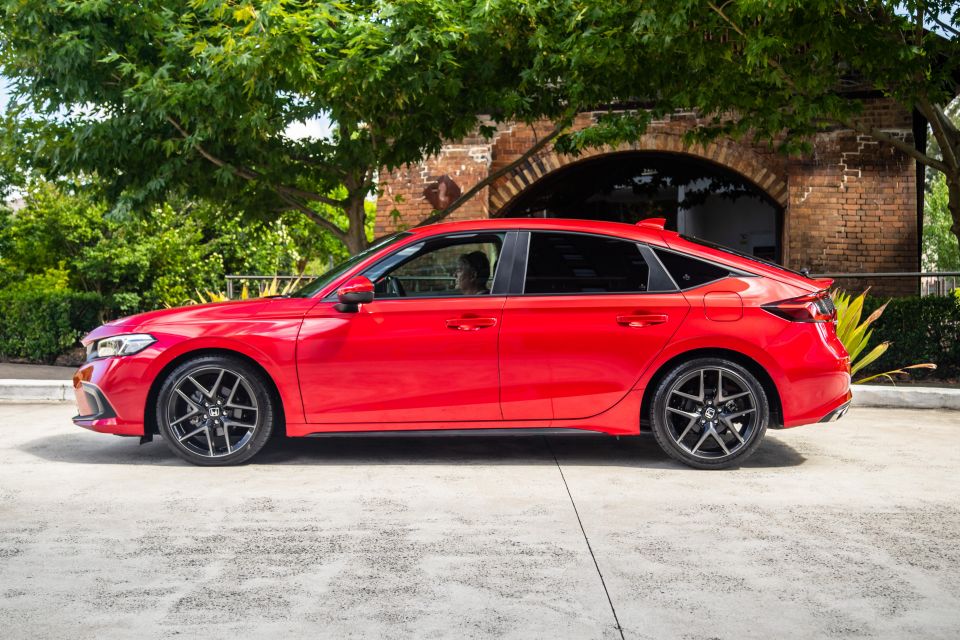
For starters, there’s a 35mm longer wheelbase than before while the rear track is wider by 12mm – both of which gel to offer more involved steering feel and more confident straight-line stability.
It’s also the first Honda Civic (not including the Type R) to use a lightweight aluminium bonnet and other weight-saving techniques like ultra-high-tensile steel that makes this latest Civic lighter (1369kg) even than the previous Civic Type R (1393kg) – notwithstanding its larger 2.0-litre engine.
I know I’m jumping the gun a bit, but you’re going to want to throw this standard Civic VTi LX into a few nicely-cambered downhill turns at the earliest possible opportunity. You can feel the finesse of Type R’s chassis lurking somewhere deep beneath in more ways than one.
Not surprising, really, given the weight of the Civic body alone has been slashed by almost 16 kilograms for improved steering feel and better front-to-rear weight distribution.
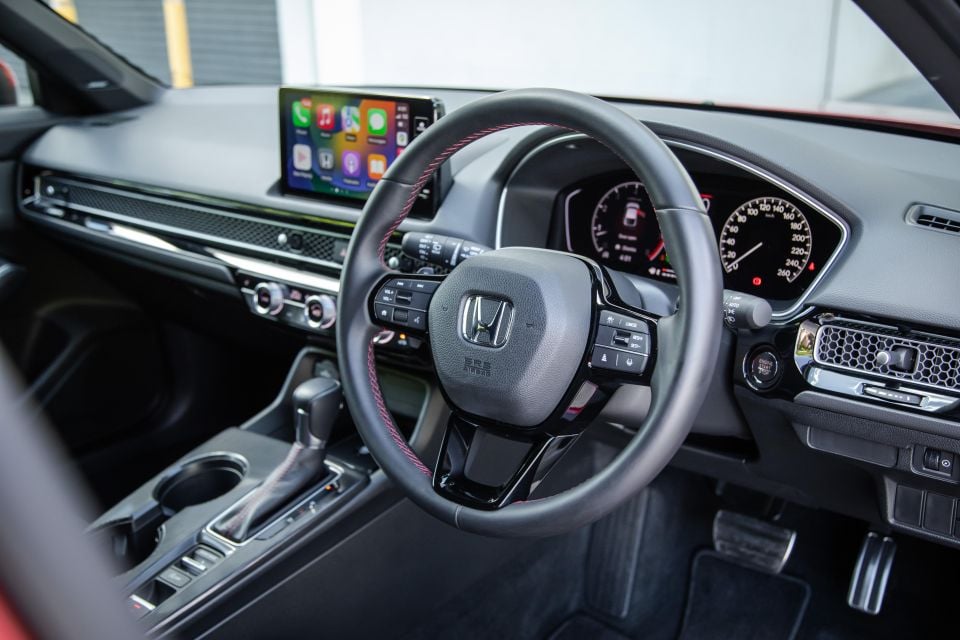
If you want to dive deeper into Honda’s chassis development on new Civic (and I do), you also find stiffer circular frames around the engine compartment and behind the rear seats. That’s for better front-end rigidity and more natural steering feel.
There’s more lightweight and structural science applied in the fact the new Civic uses almost 10 times more bonding adhesive than the previous generation – and that’s on top of the spot welds, which not only increases the stiffness of the joint but also allows for lighter sheet metal to be used.
Aesthetically, it’s a sleeker design all-round simply by virtue of its lower, wider and longer proportions combining to produce a properly sporty stance with excellent aerodynamic benefits, but there’s a lot more to it than just that.
For instance, the bonnet has been lowered by 25mm where it meets the A-pillars, while the lowered window sill has been dropped by 35mm above the hip point of the rear seat. There’s more glass but it’s a cleaner more assertive design at the same time.
Everything in this car has gone under the microscope, even the powertrain. The 1.5-litre turbo-four makes more power and torque even using 91 octane, but if you use 95 RON fuel, you’ll get a few extra kilowatts of shove.
The uprated engine uses a new high-efficiency turbocharger and exhaust manifold with the combined effect of sharper throttle response, little of no lag from lower speeds and better fuel economy. It’s also more refined, but we’ll get into that further into the review.
Inside, you may not get the red seats of the Type R, suede steering wheel or one of the best manual shifters ever made, but it’s still a decidedly sporty environment with a low-set driving position and brilliant seats just the same.
Stylish, too, especially with the cool metal honeycomb mesh that hides the air-con vents, as well as all the latest tech you’ll need.
Never mind Honda’s price rises – they’re not the only ones, in fact, given the litany of global events that have affected car prices these days, you’d be hard pressed to a find a single car manufacturer that hasn’t applied more expensive sticker prices to their entire range.
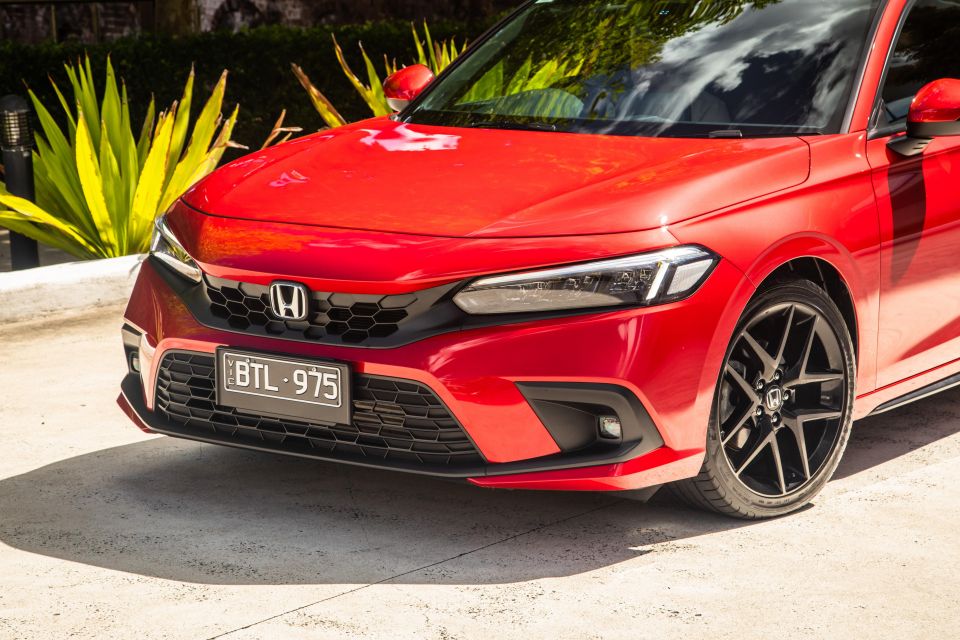
Nevertheless, the least expensive Honda Civic VTi LX will cost you the princely sum of $47,200 drive-away. And, as you might expect at this price point, there are no options.
The next rung up the Civic ladder is the e:HEV LX hybrid, priced at $55,000 drive away, while the top-spec Civic Type R will set you back $72,600 drive away.
Some buyers will choose to compare the base Civic to the likes of the Volkswagen Golf R-Line ($40,490 ), Audi A3 Sedan 35 TFSI ($50,200), BMW 1 Series 118i M Sport ($53,900) and Mercedes-Benz A180 ($49,890). All prices exclude on-road costs
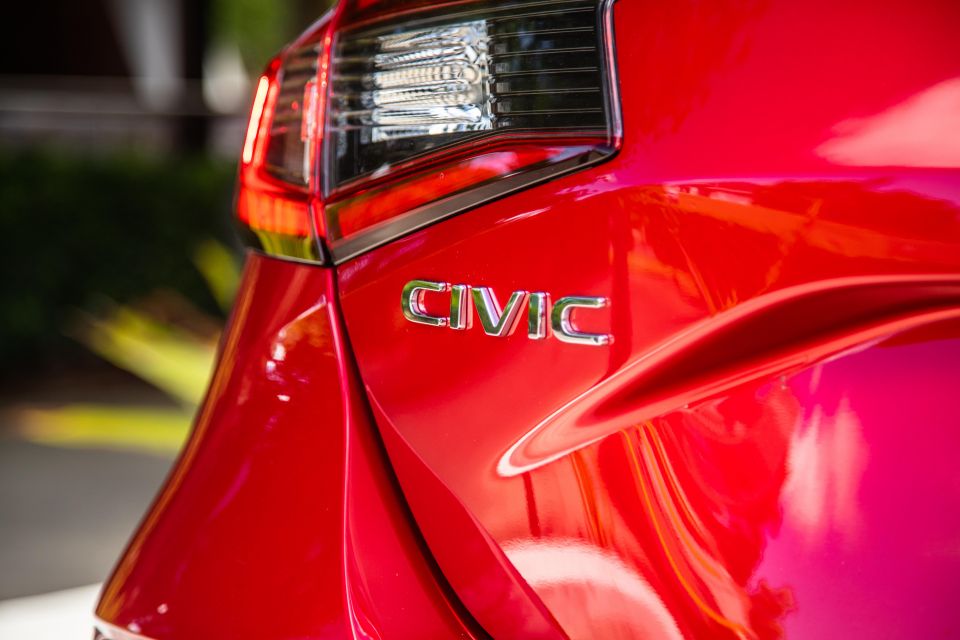
2023 Honda Civic pricing:
Prices are drive-away
Buy your new car without the stress. It's fast, simple and completely free.

Great service from Travis and team, second time I have used this business would not hesitate to recommend them to anyone
Craig C.
Purchased a Ford Ranger in Sunshine Coast, QLD
CarExpert helped Craig save thousands on his Ford Ranger, now let us save you on your next new car.
Find a dealThere are luxury cars that don’t look and feel this good in the cabin, but it’s the attention to detail, the mix of premium materials and specially-designed components that are most obvious in the latest Civic.
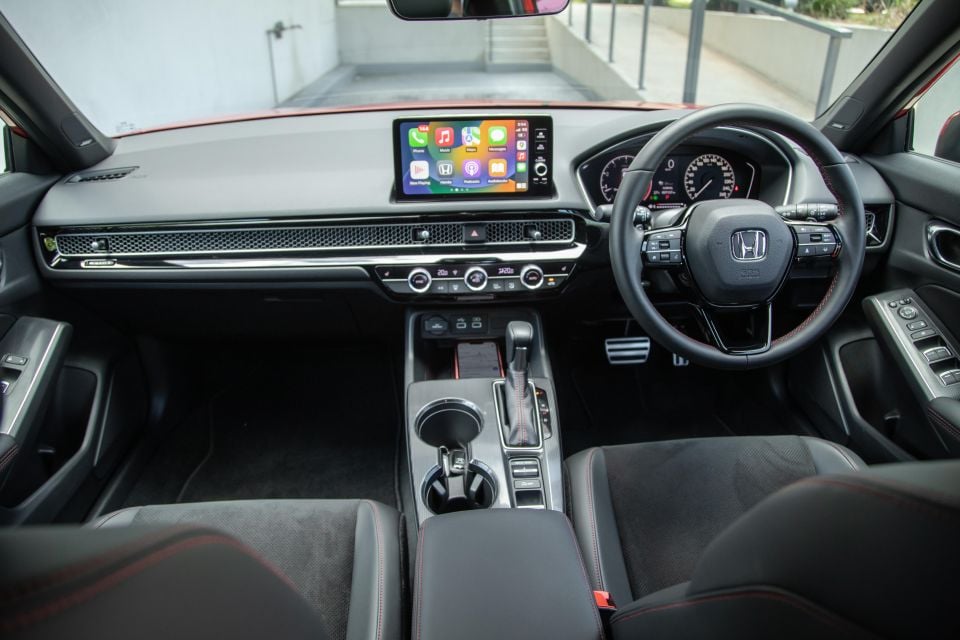
No surprise when you learn that Honda’s interior team spent weeks in the US to determine what kind of everyday experiences constituted someone having a ‘fine morning’. Sounds a bit out there but through the data collected, it came down to the smaller things.
So much so that the design team worked with the colour, fabric and material team to develop switches, knobs and major touch points. It shows too, from small things like Civics’ unique take on AC vents – using real metal honeycomb mesh as a design piece with small alloy joysticks both of which have marvellous tactility.
The plastics, surfaces and touchpoints are first rate, as is the mix of interesting surfaces used throughout the cabin. It’s a clean and largely uncluttered design but still with common-sense applied in the form of nicely knurled dials for the climate control and volume knob – though you’ve also got audio controls on the steering wheel.
And, this is one very fine steering wheel, too. Perfectly round and leather wrapped with contrast red stitching and very similar to that in the Type R (which is Alcantara-like). It’s nice in the hands too.
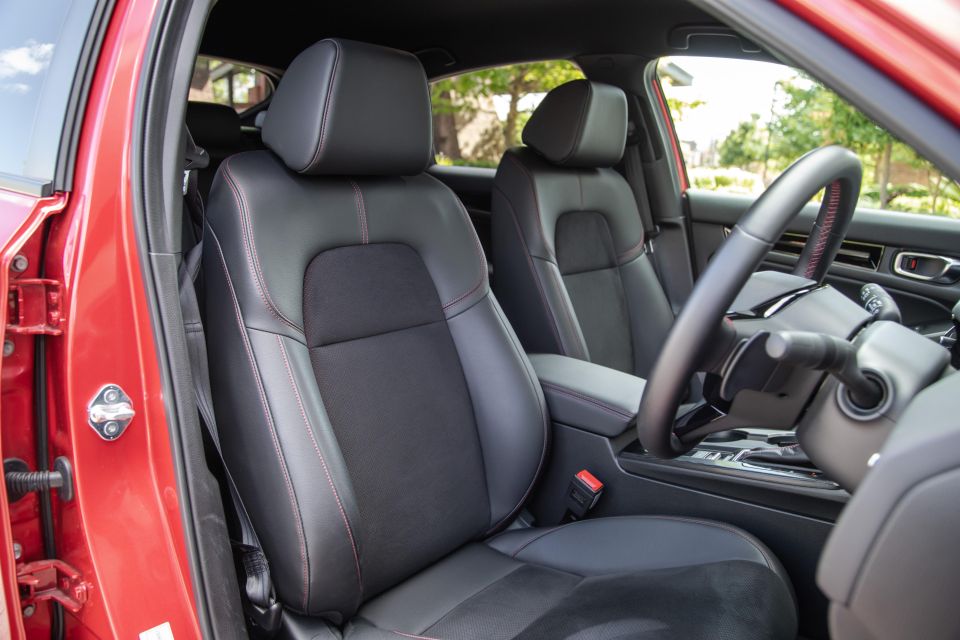
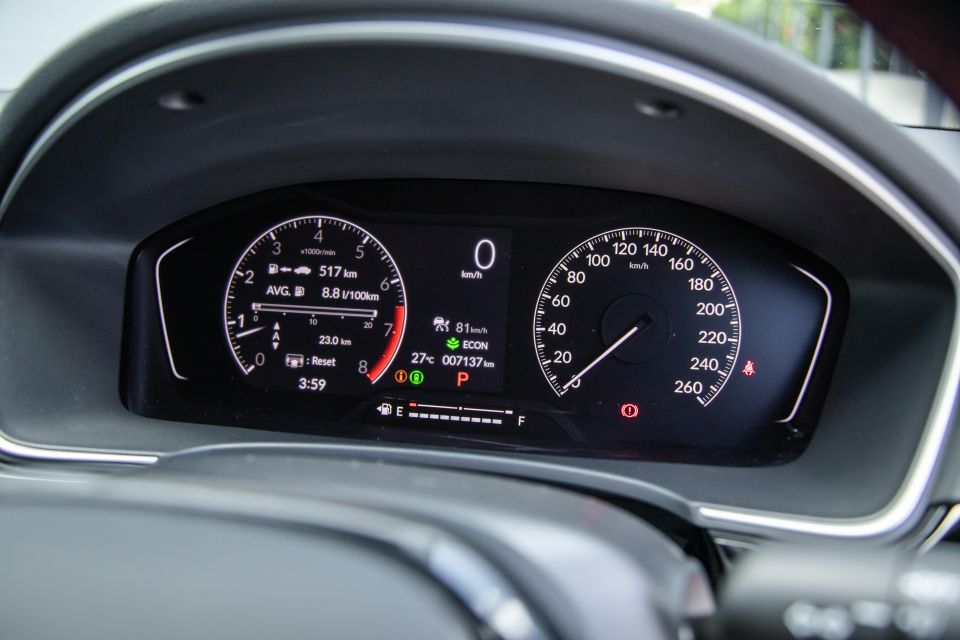

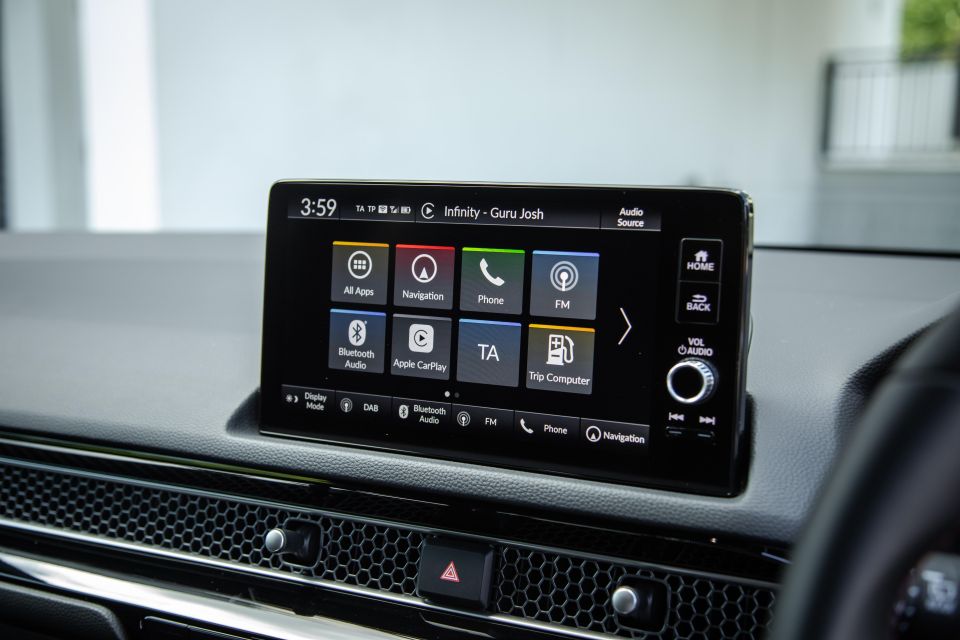
The front seats are also special. Honda call them Body Stabilising Seats – and I can tell you these are some of the most supportive and comfortable in the business.
The metal frame underneath is one of the most intricate I’ve ever seen – designed with a new resin mat that supports the area from the pelvis to the lumbar spine. Moreover, the curve at the seat bottom prevents you sliding forward even under emergency braking.
Better still, the suede-like upholstery is wrinkle-free and so much better than leather itself in terms of ‘bottom protection’ on hot and cold days.
The tech is also a big improvement over the last iteration, but there’s no fully-digital driver’s display like most other carmakers offer these days – at least for this kind of money.

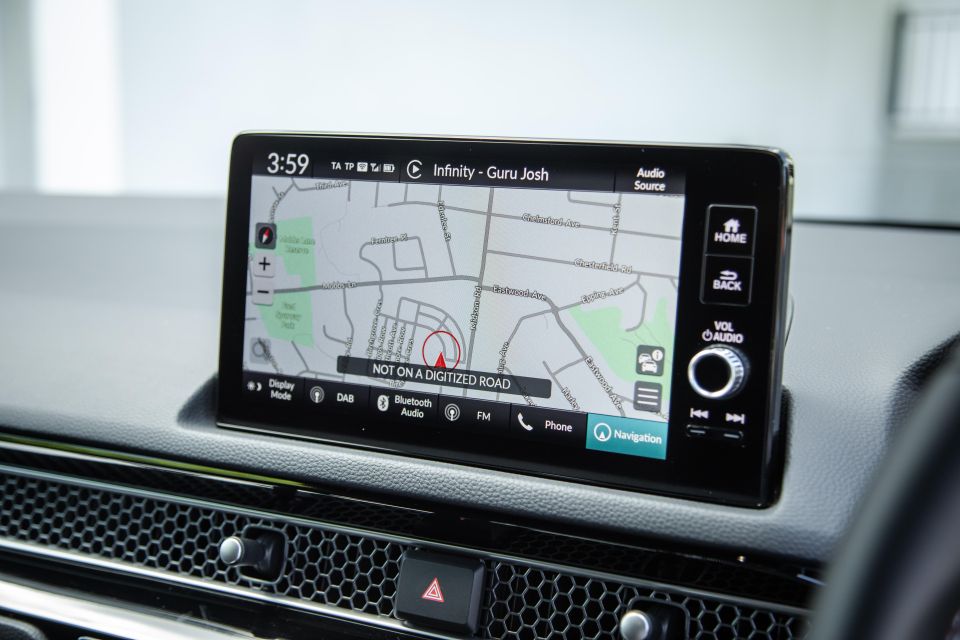
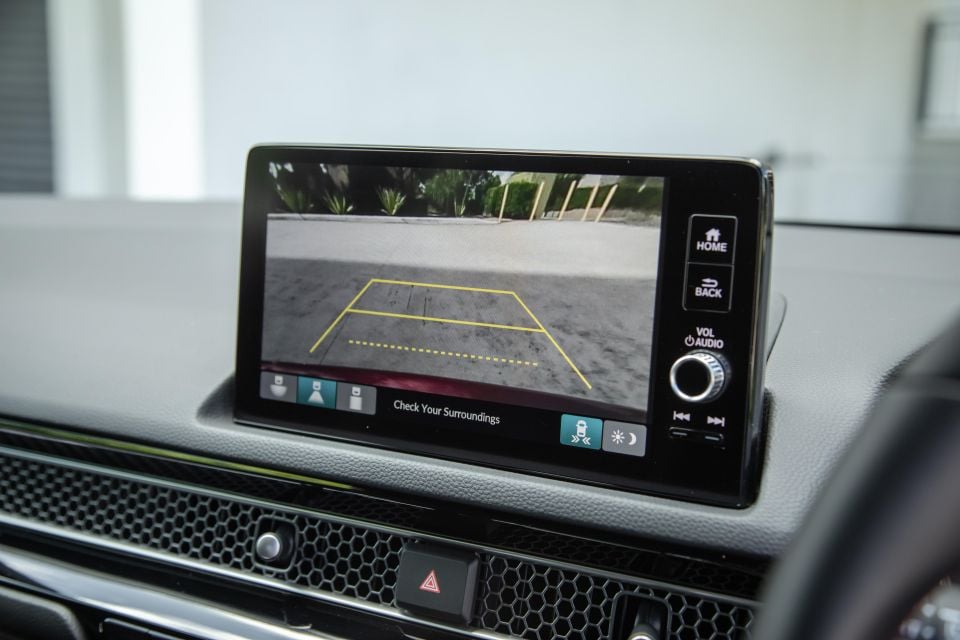
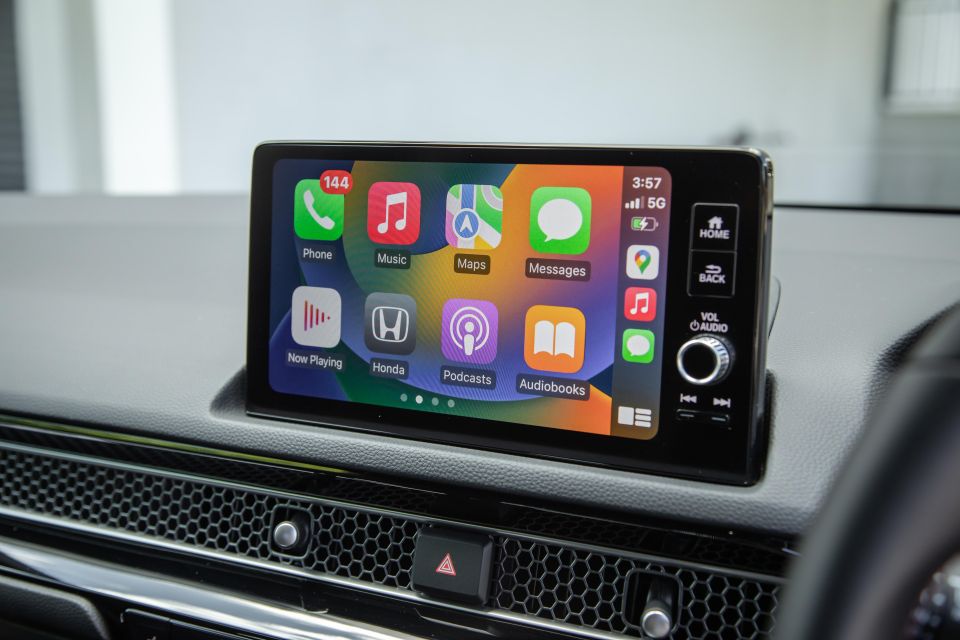
Nonetheless, the infotainment touchscreen delivers excellent clarity and response rates, while wireless Apple CarPlay proved to be robust and quick to recognise my phone as I was climbing in.
There’s also a good number of functional storage spaces including a wireless phone charging shelf that’s also large enough for wallets and keys despite the old-school shifter.
There’s also the mandatory twin cupholders and decent centre console bin for larger things like sunnies etc. However, while there are two USB ports up front, both are old-school USB-A. There are no USB charging ports dedicated to rear-seat passengers.
Although the VTi LX is a five-seater unlike the four-seat Type R, the suede-like material only extends to the two outer seat inserts, with the centre position doubling as a central armrest with additional cupholders.
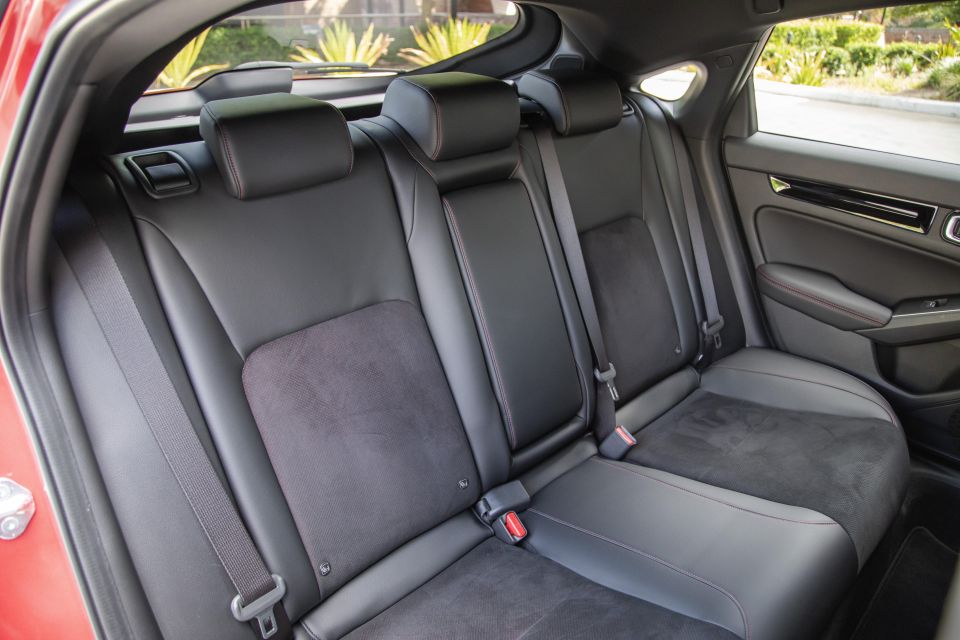
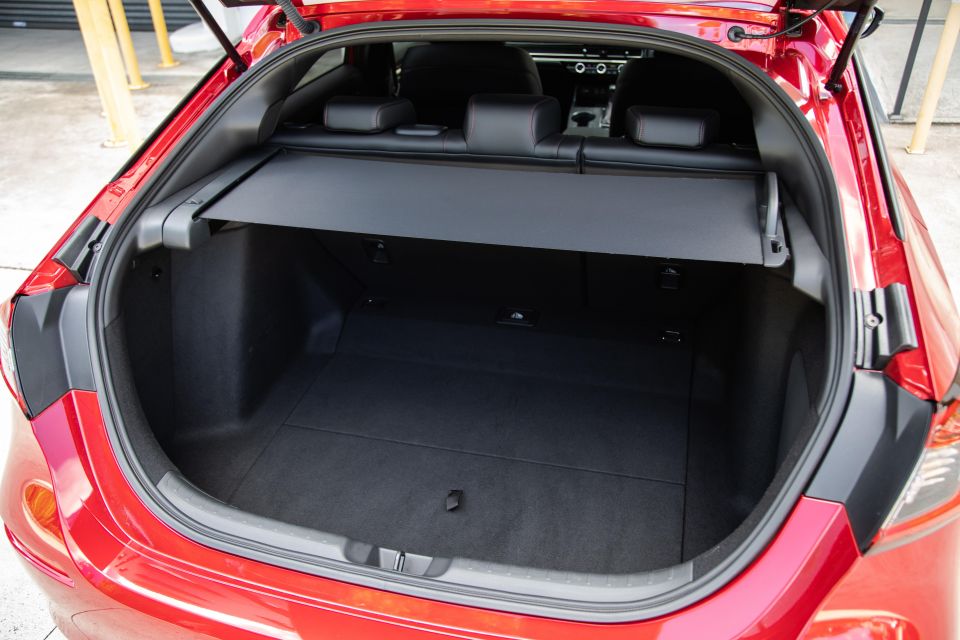
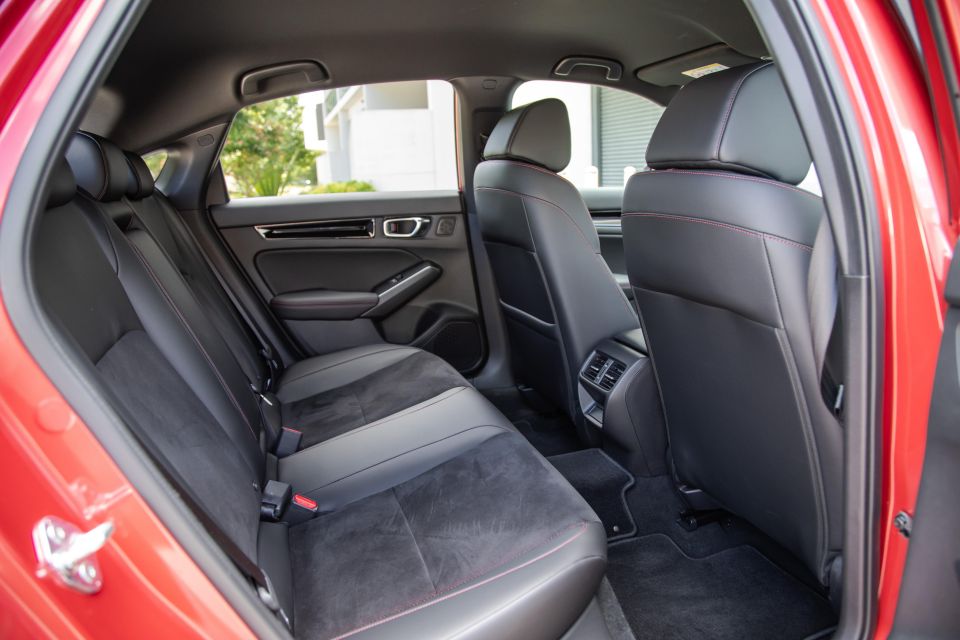
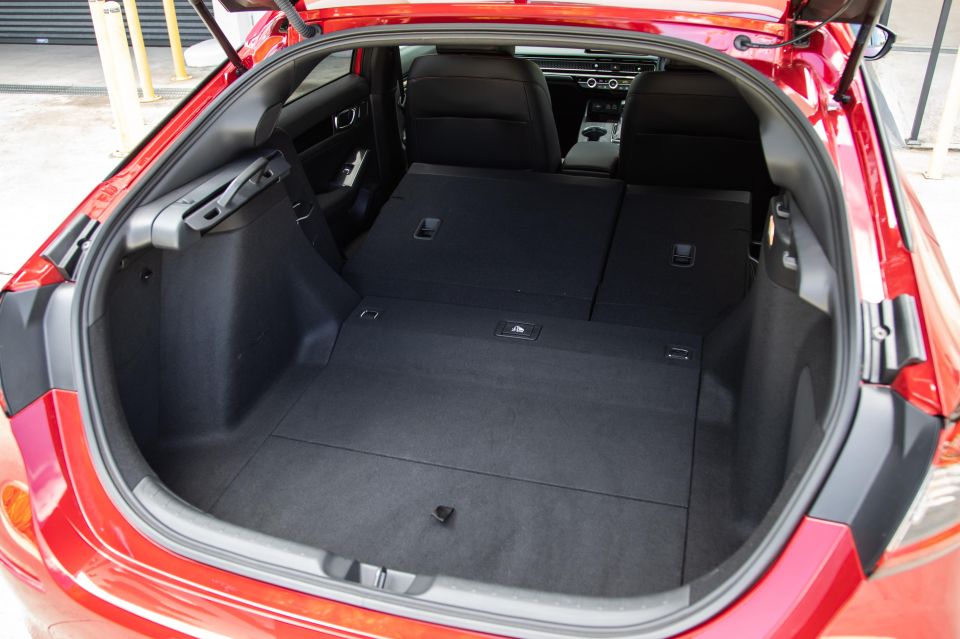
Rear leg space is excellent thanks to the new Civic’s 30mm extra overall length compared to the previous generation, which in turn has resulted in 35mm more space underfoot.
It’s better than most in the segment if we compare it to the likes of Hyundai’s i30 Hatch (381L) and Toyota Corolla Hatch which offers an impossibly small 217 litres.
Not only is boot space similarly generous with 404 litres available back there but there’s another 45 litres of underfloor storage, expanding the gross space to 449 litres, which again, is better than most in the small hatch segment.
Power in the Honda Civic comes from a 1.5-litre turbocharged petrol four-cylinder engine making 131kW at 6000rpm and 240Nm from 1700rpm to 4500rpm running on 91 RON regular unleaded fuel.
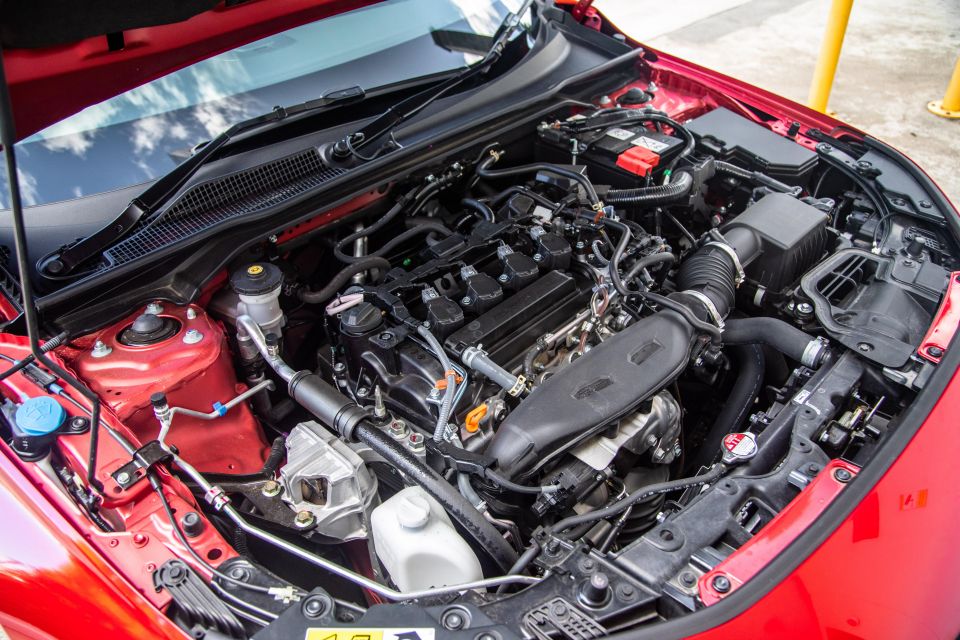
It’s mated with a CVT (with Step-Shift) as standard. The 0-100km/h sprint takes around 7.5 seconds, according to Honda.
Choose the e:HEV hybrid Civic and you get 135kW from 5000rpm-6000rpm and 315Nm at 0-2000rpm available.
It’s no Type R, but by the same token, it gets along better than you might expect of a 1.5-litre turbo-four.
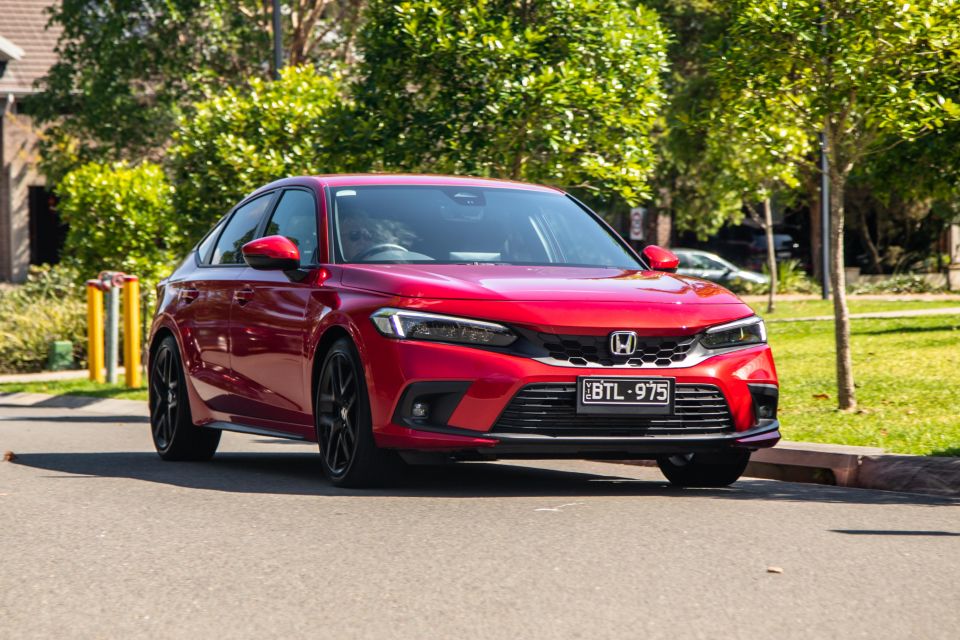
Not only is there plenty of off-the-line punch, it keeps on pulling with real intent and with a genuine snarl to the exhaust note.
Even at low speeds the new Civic sounds purposefully sporty and delivers its power sans lag from any speed or anywhere throughout the rev range. It’s one of the few advantages of a CVT transmission in my view, and this is one of the better engineered iterations which does its best to eliminate the so-called ‘rubber band effect’.
There are three drive modes to choose from (Eco, Normal and Sport); and while Eco still manages to generate a lively throttle response, you’ll want to toggle through to Sport for satisfyingly quick acceleration.
However, it tends to be a bit too trigger-happy for the morning commute, but once you’re on the move it’s a most enjoyable driving experience. There are paddleshifters if you’d like to take advantage of Honda’s Step-Shift function, but it works just as well if left alone, thanks to the system’s activation under full throttle.
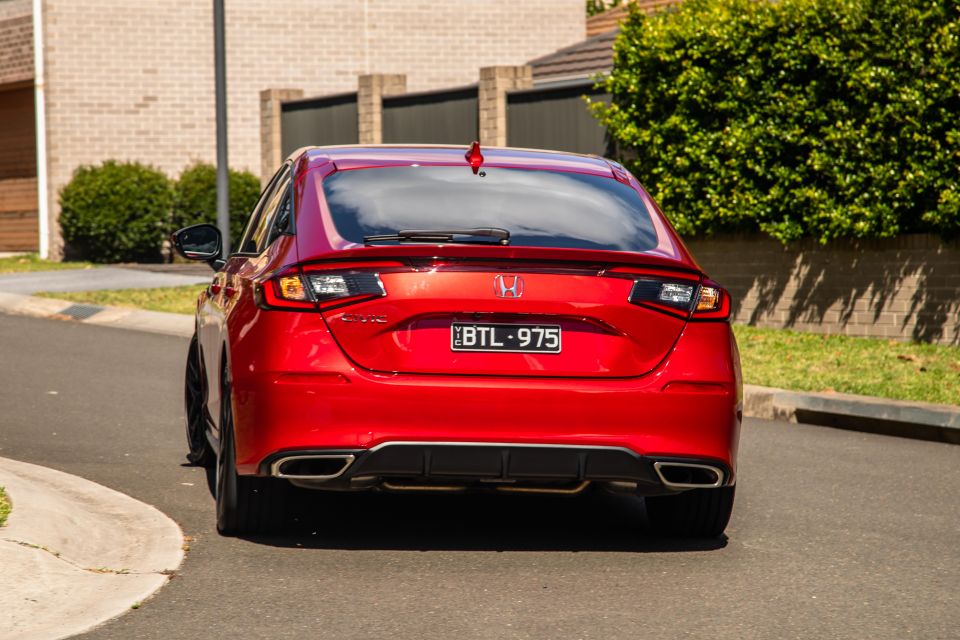
It’s not just the engine response that wins you over, it’s more the new and improved chassis that impresses me most. This is where Honda has almost always outshone the competition and the new Civic is peerless for its sheer poise and confidence through the twisty bits.
There’s no question this chassis can handle significantly more power and torque, while the overall driving experience would most certainly be enhanced with a genuine automatic transmission. But, it’s still a daily driver that’s guaranteed to put a smile on your dial every time you get behind the wheel.
It’s the sharper-than-usual turn-in response, steering feedback, and chassis rigidity that you can feel from the very first turn that makes it a different kind of daily driver to the rest of the hatch pack. But here’s the thing – it’s also outstandingly well-damped.
Don’t get me wrong, the Civic VTi LX has been designed for people who appreciate an agile car with excellent handling characteristics, but not at the expense of comfort. It’s still sporty suspension tune but it manages to isolate bumps and poorly maintained road surfaces from the cabin.
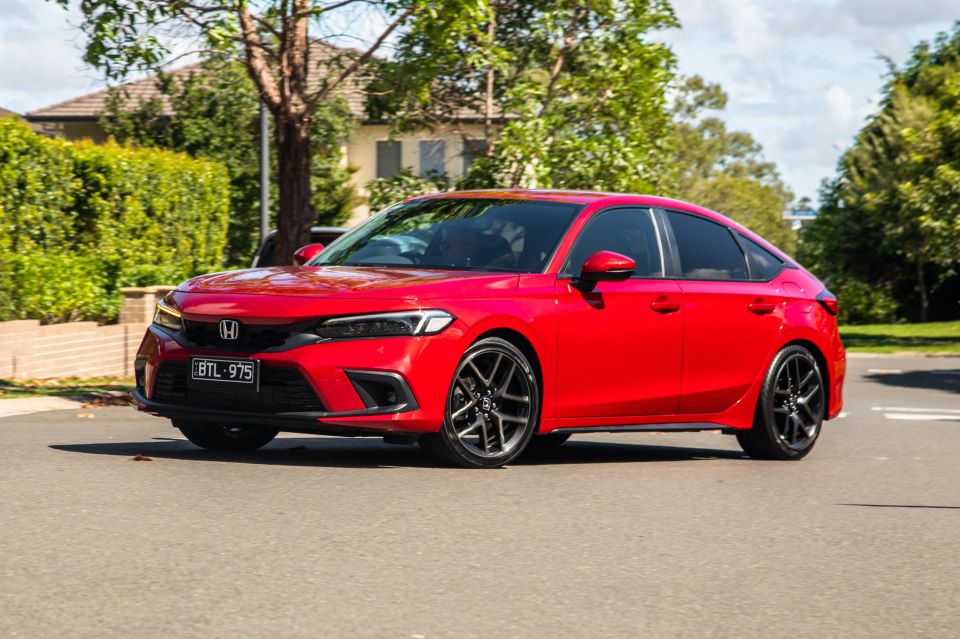
Where expert car reviews meet expert car buying – CarExpert gives you trusted advice, personalised service and real savings on your next new car.
The car feels ultra-stable over the roughest bits of road, so you can simply any such precautionary driving. Honda has reduced suspension friction with improved bushings. The same goes for the steering system.
That engine snarl I mentioned earlier in the piece is pretty much all you end up hearing inside, thanks to a new lightweight flex tube in the exhaust which inhibits engine noise in the cabin.
All the major controls including the brakes have a wonderful linearity about them, as well as confident stopping power, though, the braking system specs are nothing special, although measures including low-friction calipers up front have been employed to reduce brake drag.
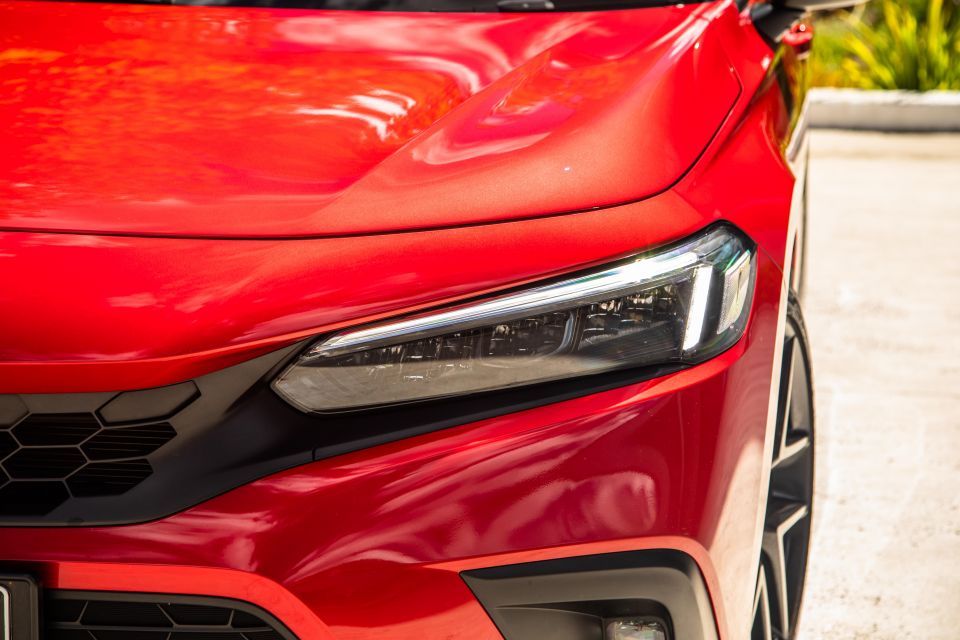



Civic VTi LX highlights:
Civic e:HEV LX adds:
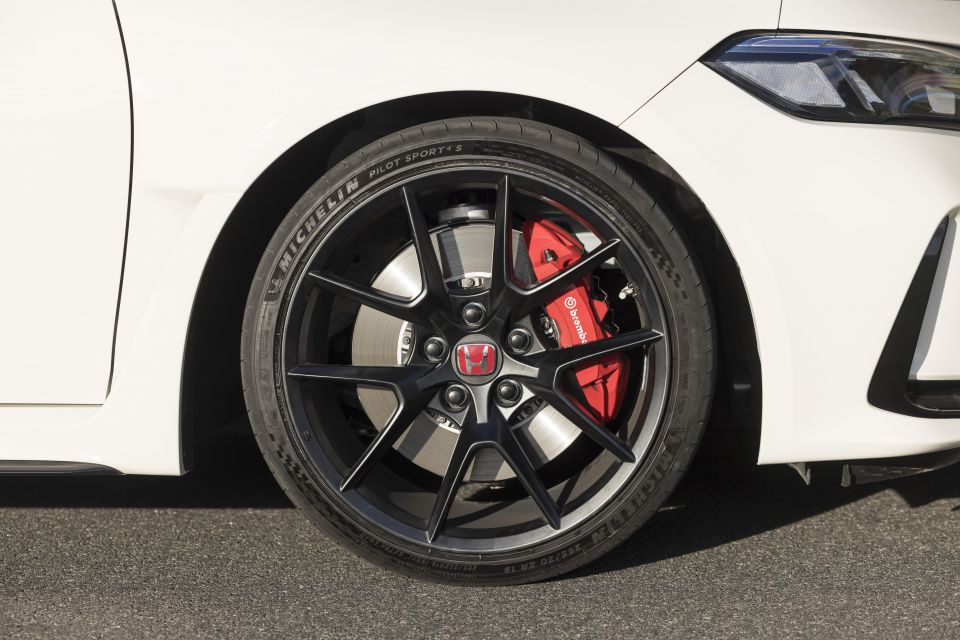
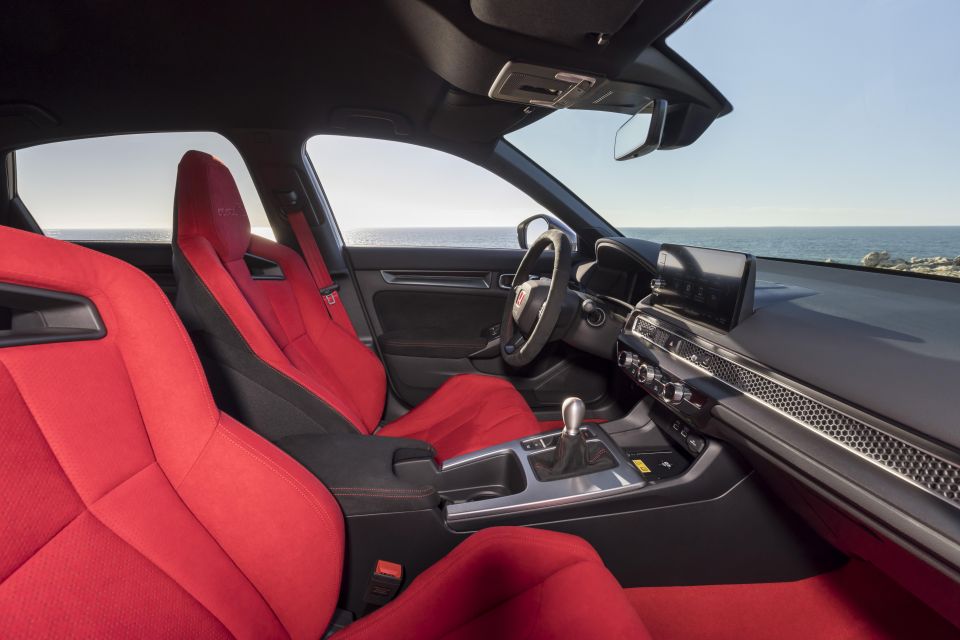
Civic Type R adds:
The track-focused Type R also loses heating and power adjustment for the front seats, rear air vents, and, naturally, paddle shifters.
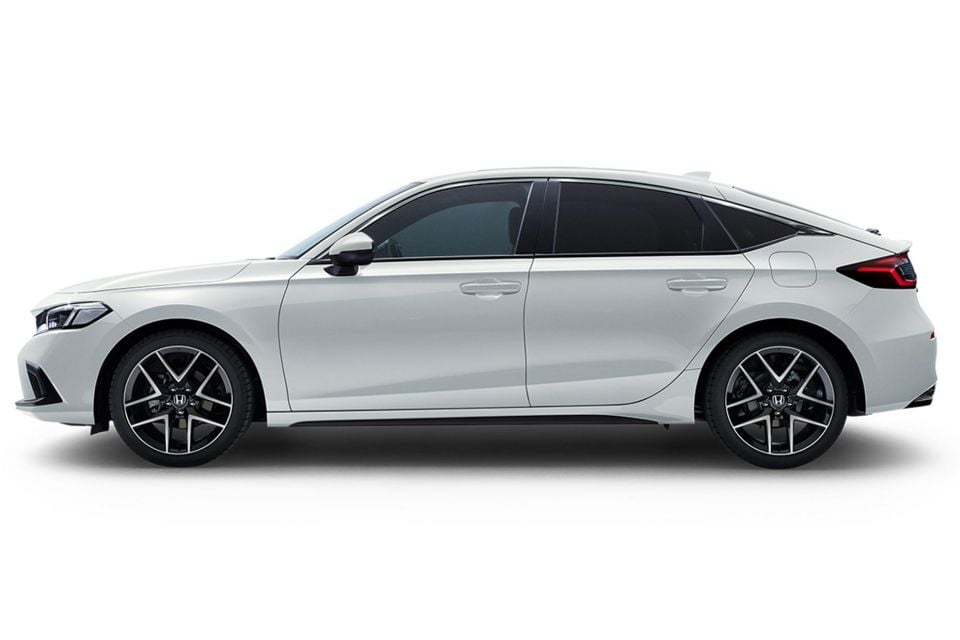
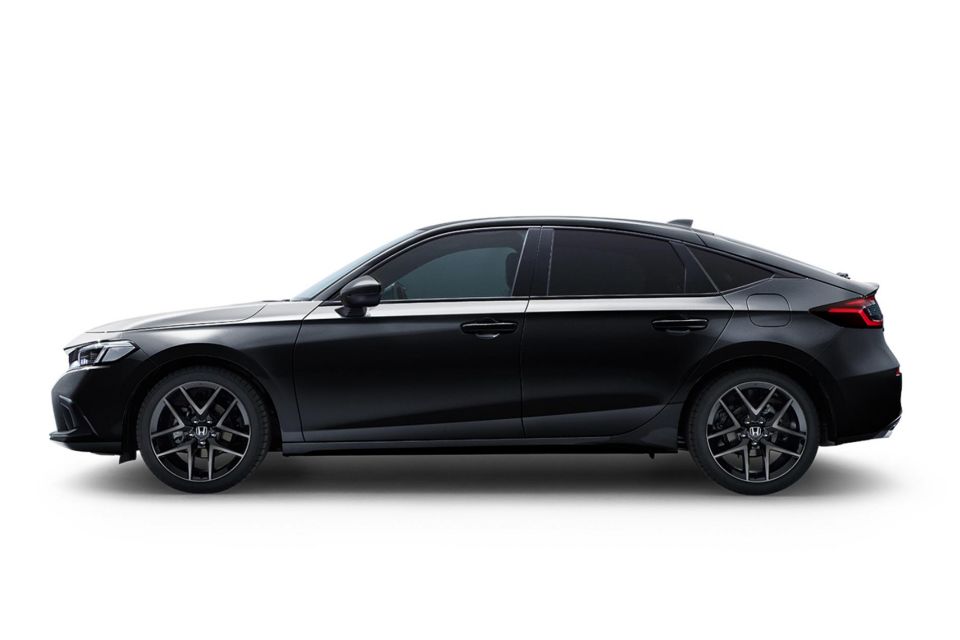
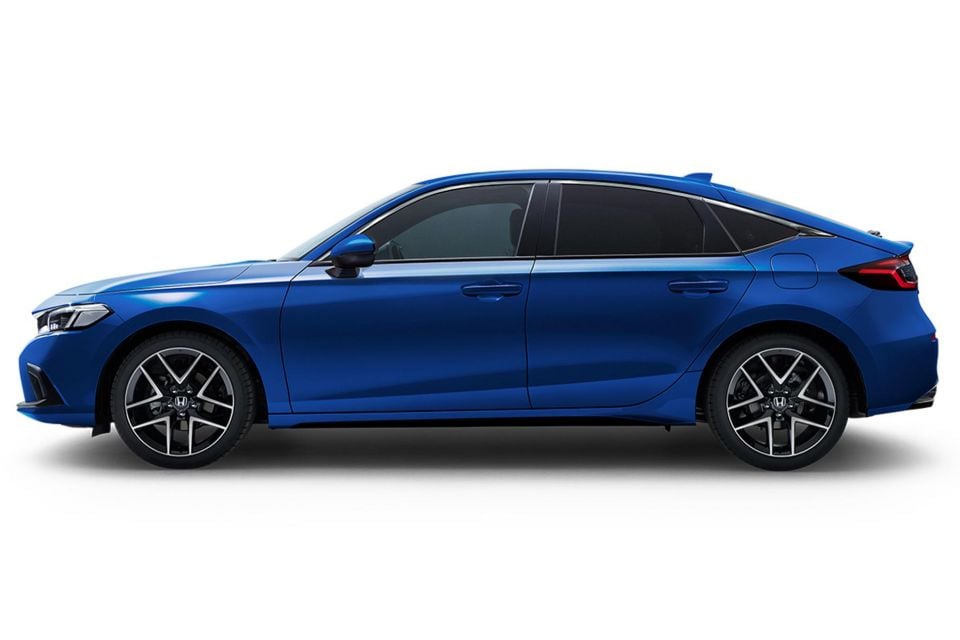
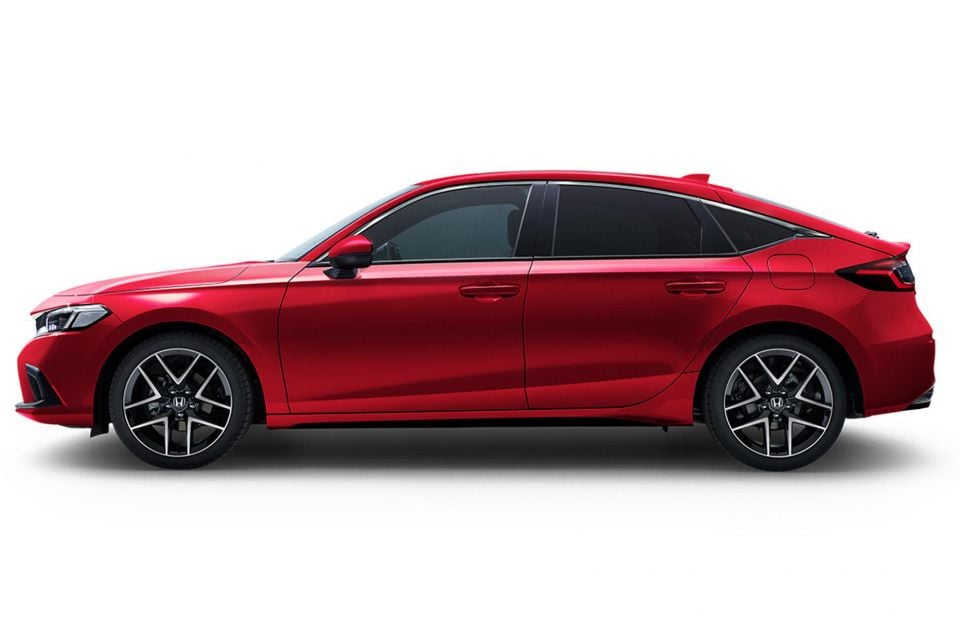
The Civic VTi-LX and e:HEV LX are available in the following finishes:
The Civic Type R is available in the following finishes:
The Honda Civic is yet to be crash rated by ANCAP – but it does wear a five-star Euro NCAP rating abroad.

Against 2022 protocols, the Civic e:HEV scored 89 per cent for adult occupant protection, 87 per cent for child occupant protection, 82 per cent for vulnerable road users and 83 per cent for safety assist.
Standard safety equipment includes:

Civic e:HEV LX adds:
The Honda Civic is backed by a five-year, unlimited-kilometre warranty, along with five years of roadside assist and map updates.

Scheduled maintenance is required every 12 months or 10,000 kilometres – whichever comes first.
Vehicles sold after October 1, 2022 are also subject to higher service costs than before, listed at $199 for the first five visits as opposed to the dirt-cheap $125 from before then.
Average fuel consumption on the combined cycle is listed as 6.3L/100km but most of our testing was over Urban kays where we got close to the Honda’s claim of 8.0L/100km, and that’s using the Sport drive mode almost exclusively.
If you’re after a bargain in the small hatch segment then there are plenty of cheaper options, but as the saying goes: ‘you get what you pay for’.
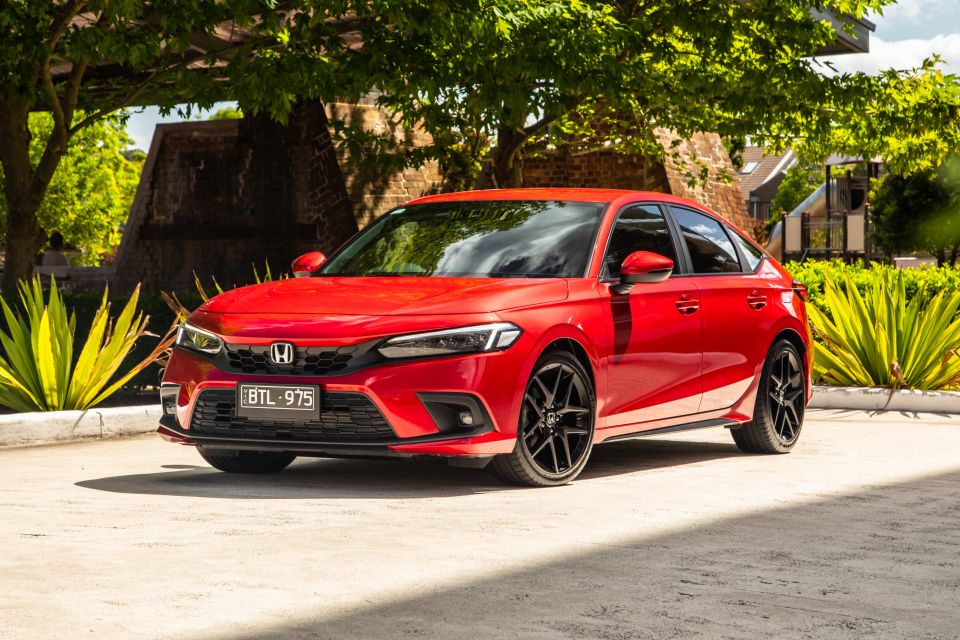
It might be an entry-level player in the local range, but you’re unlikely to find a more perfectly polished hatch as the Civic VTi LX, which delivers the goods across so many fronts.
By any measure this is a superbly engineered car that not only looks the goods, drives even better, comes loaded with kit, has a stack of room and is cheap to run.
The fact that it shares its bones with one of the best hot hatches ever built is something you’ll feel every time you’re behind the wheel and having a bit of fun.
Put the Civic at the top of your shortlist if you’ve got a few extra bucks to spend.

Click the images for the full gallery
MORE: Everything Honda Civic
Where expert car reviews meet expert car buying – CarExpert gives you trusted advice, personalised service and real savings on your next new car.
Anthony Crawford is a CarExpert co-founder and senior presenter with 20+years in automotive journalism and content creation.


Matt Campbell
4 Hours Ago


William Stopford
20 Hours Ago


Josh Nevett
21 Hours Ago


Ben Zachariah
2 Days Ago


CarExpert.com.au
2 Days Ago


Damion Smy
2 Days Ago